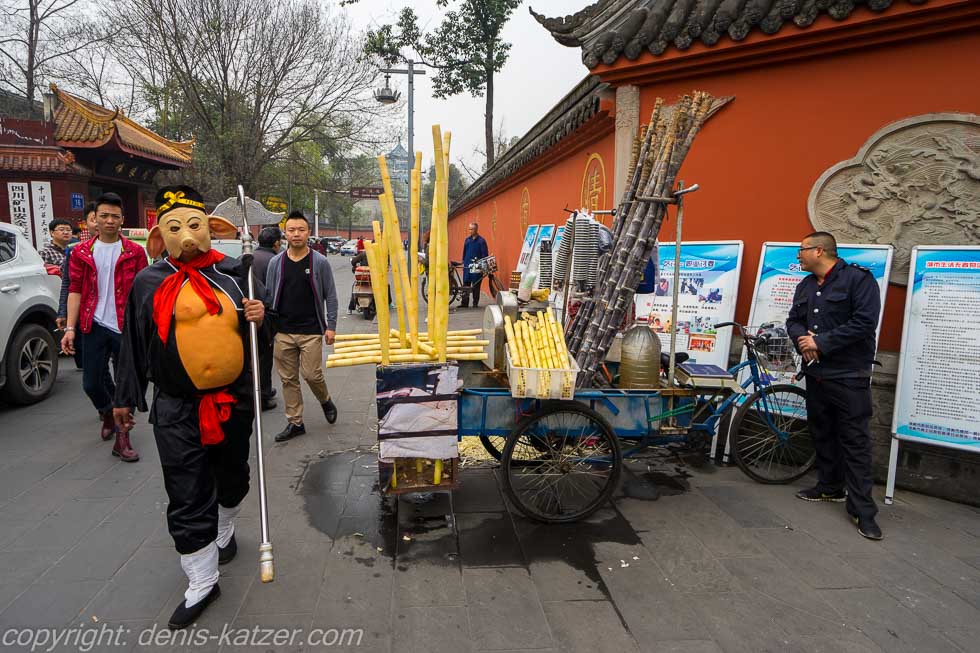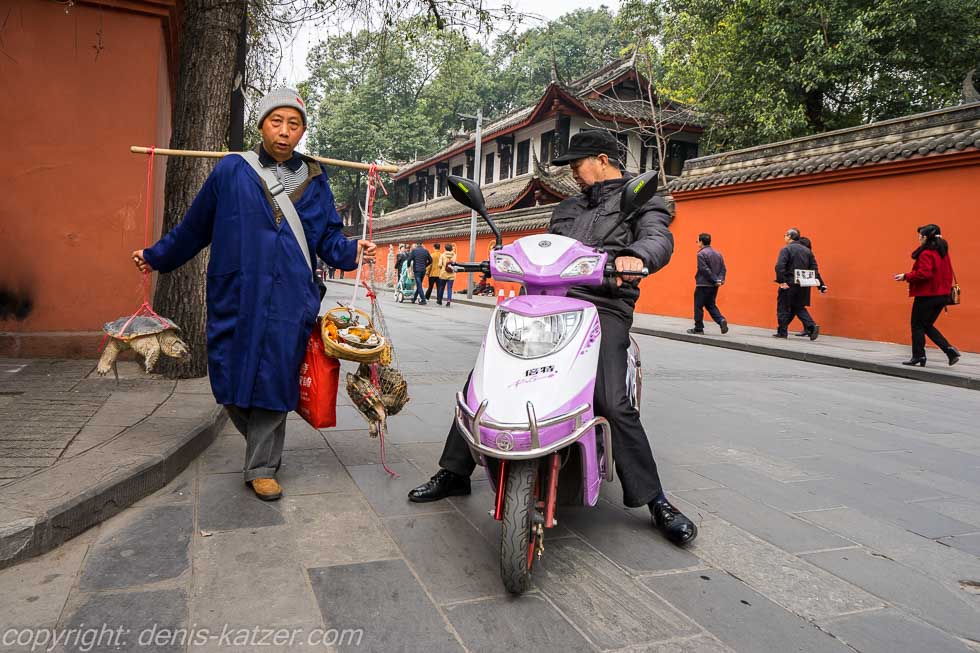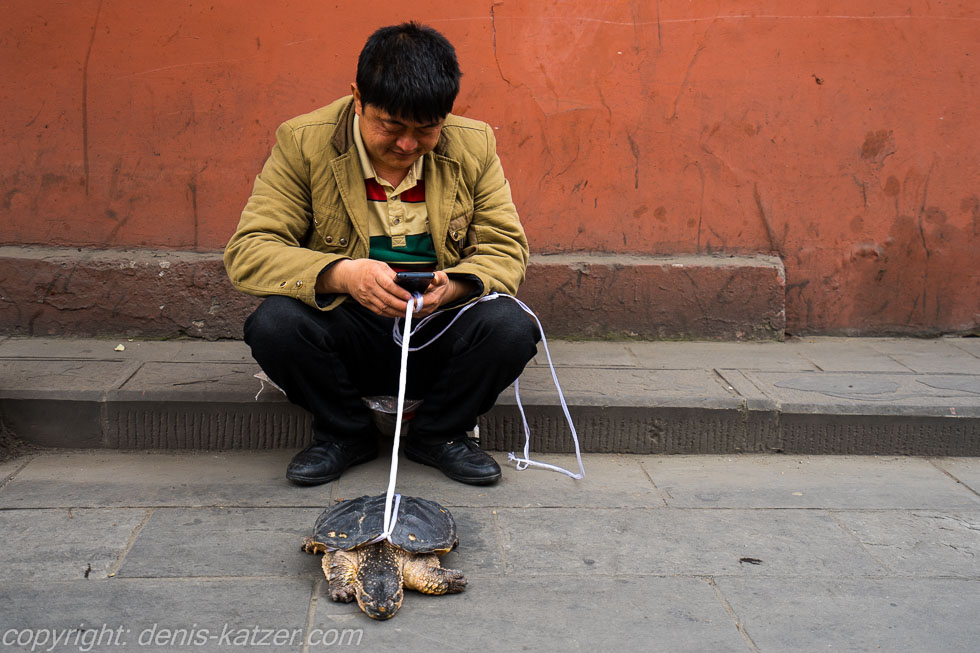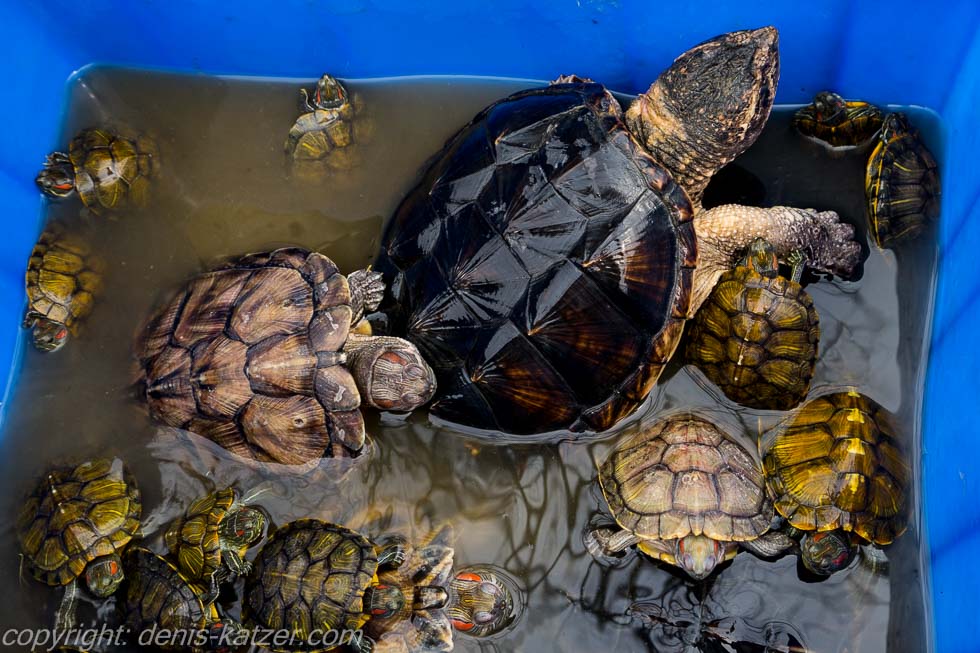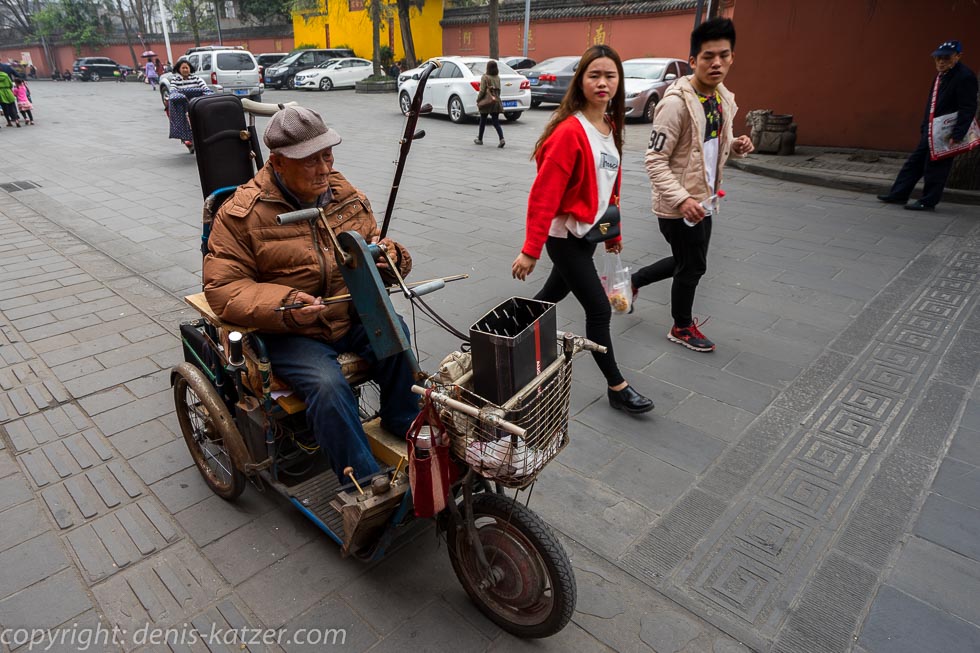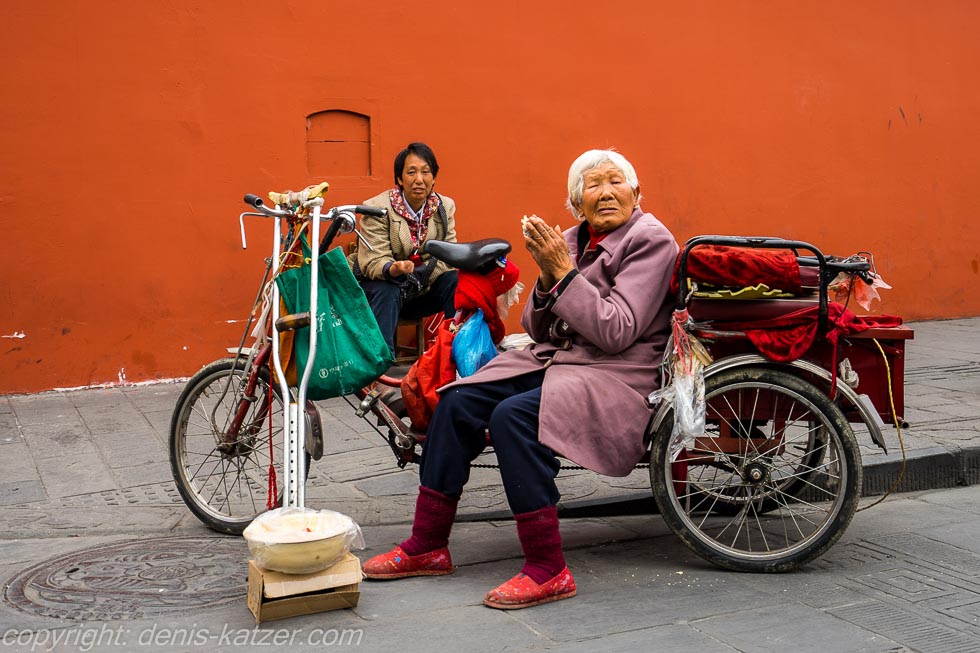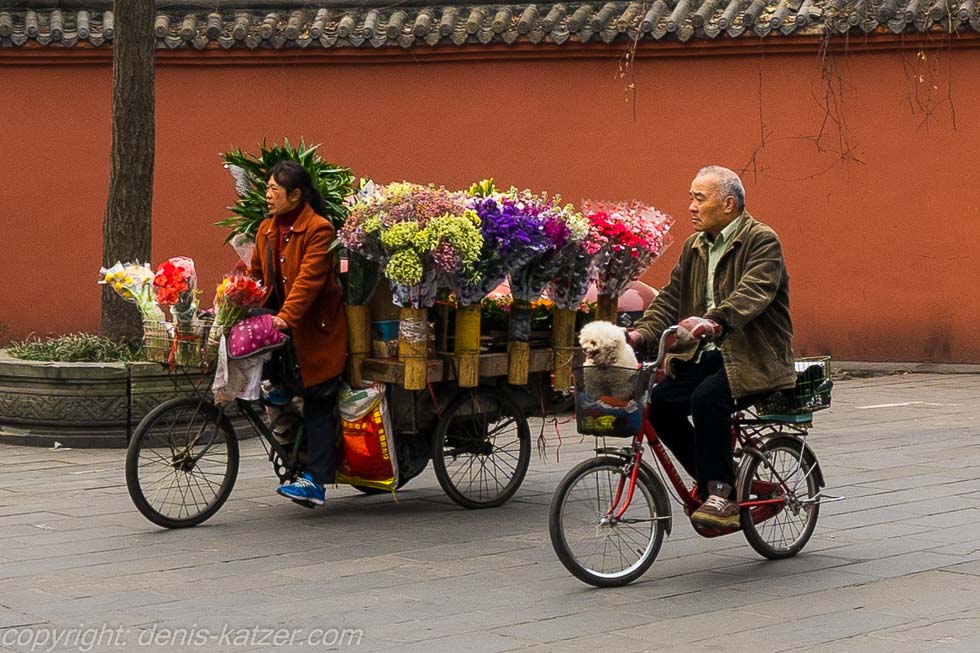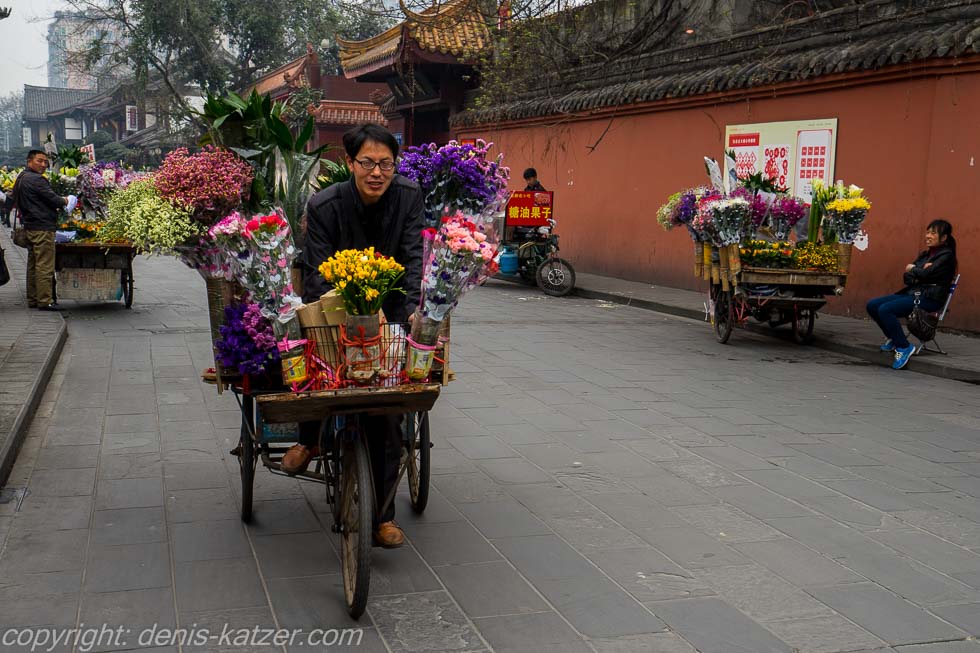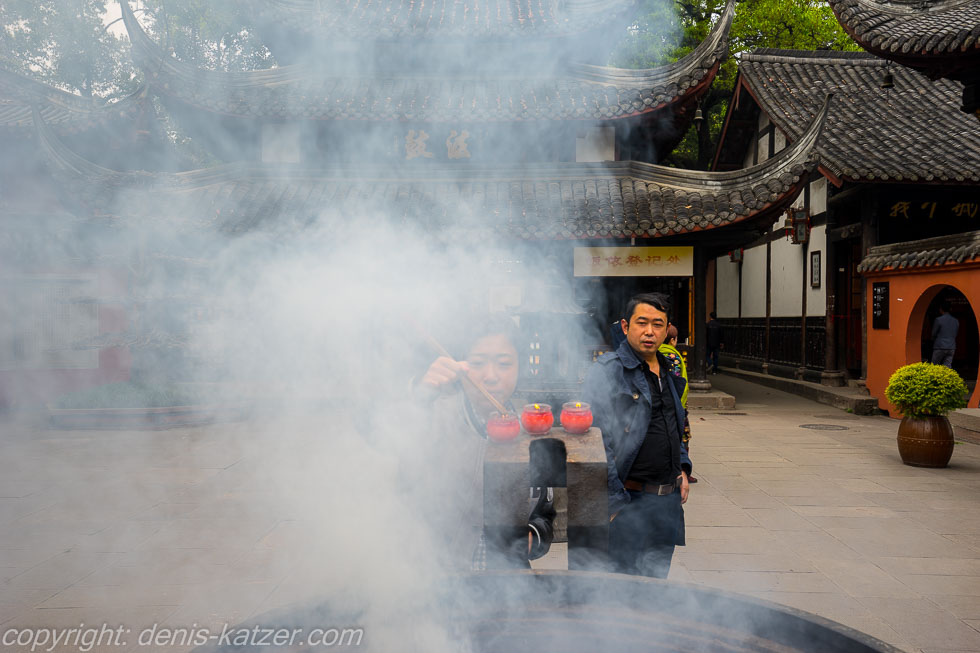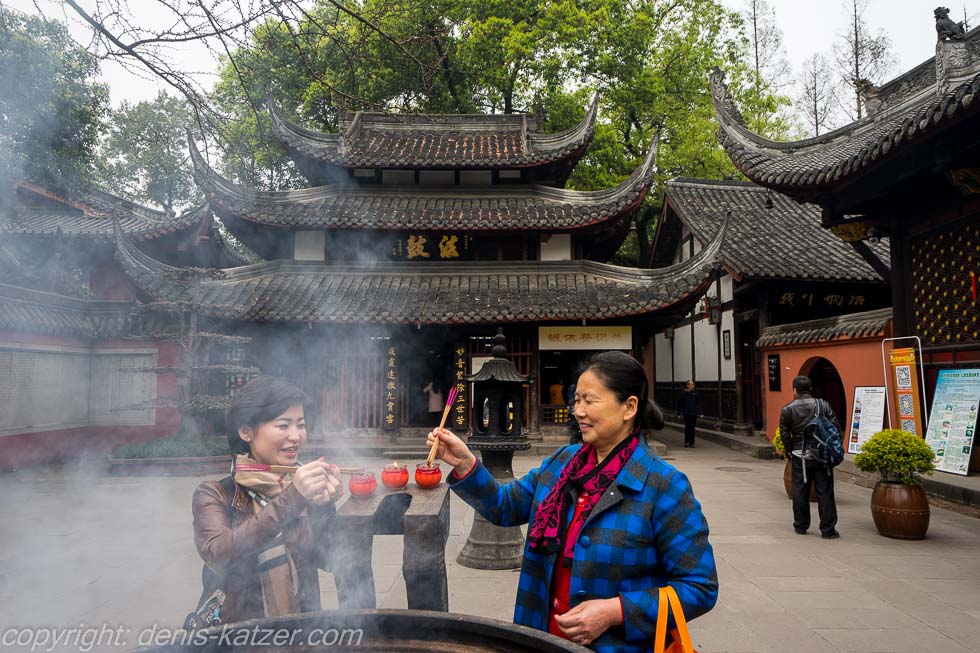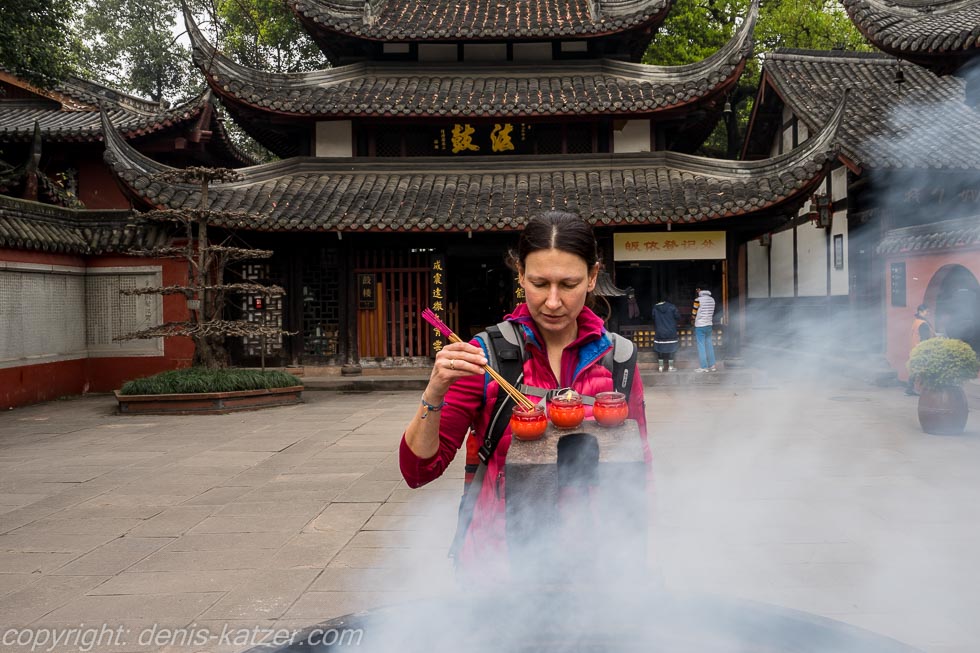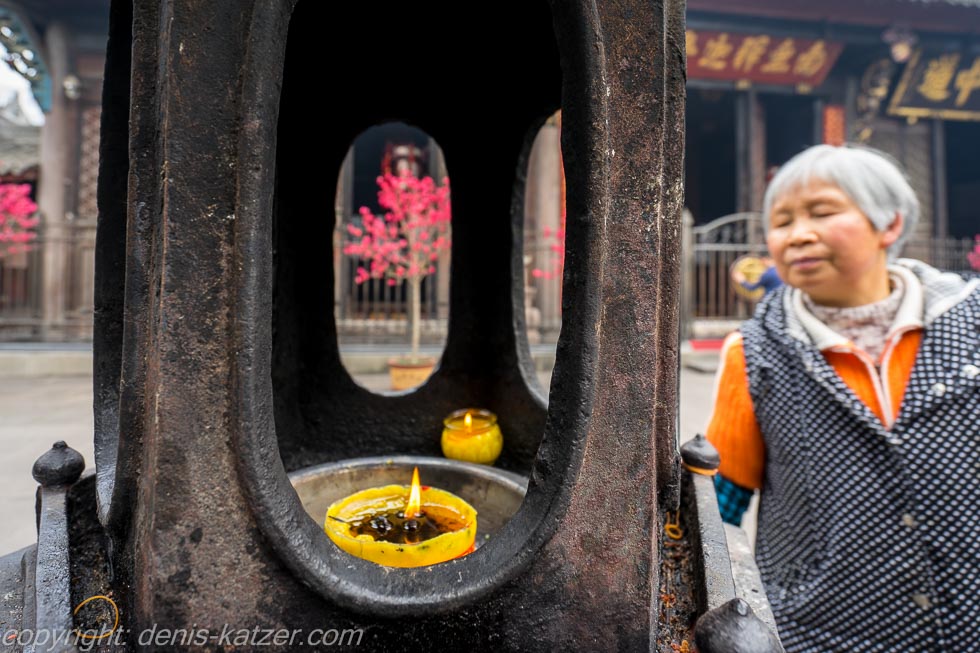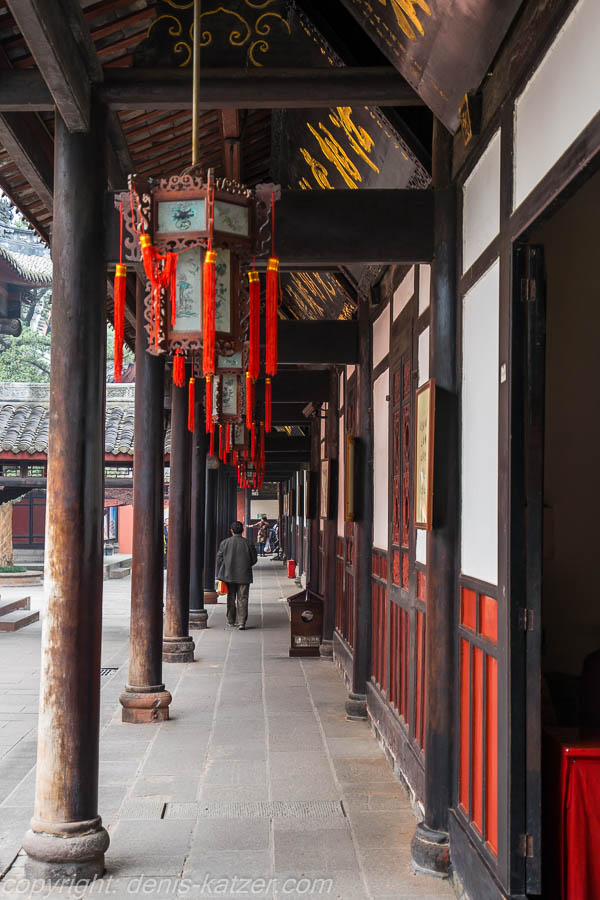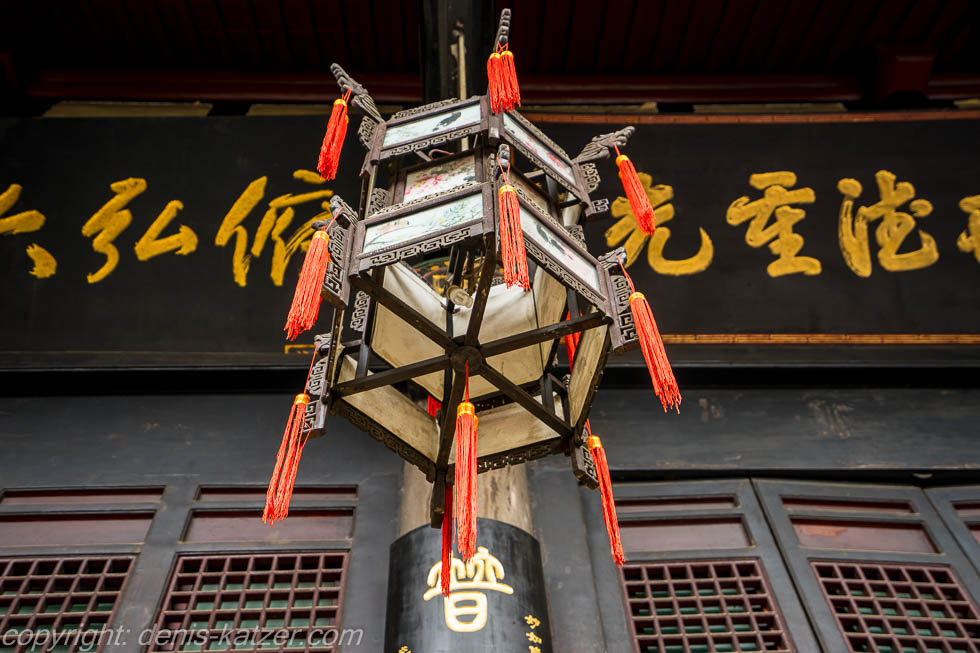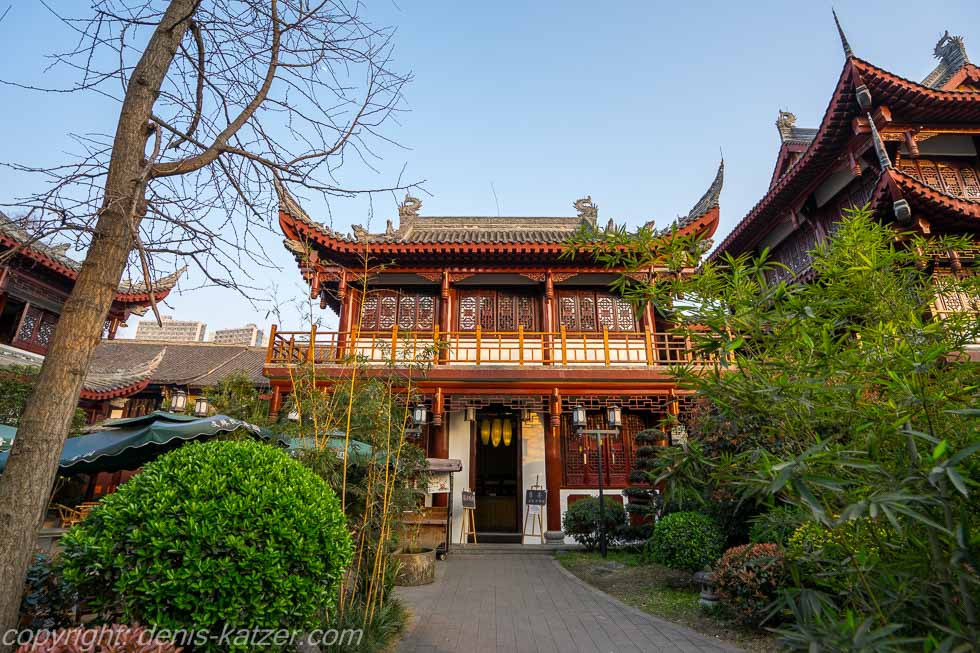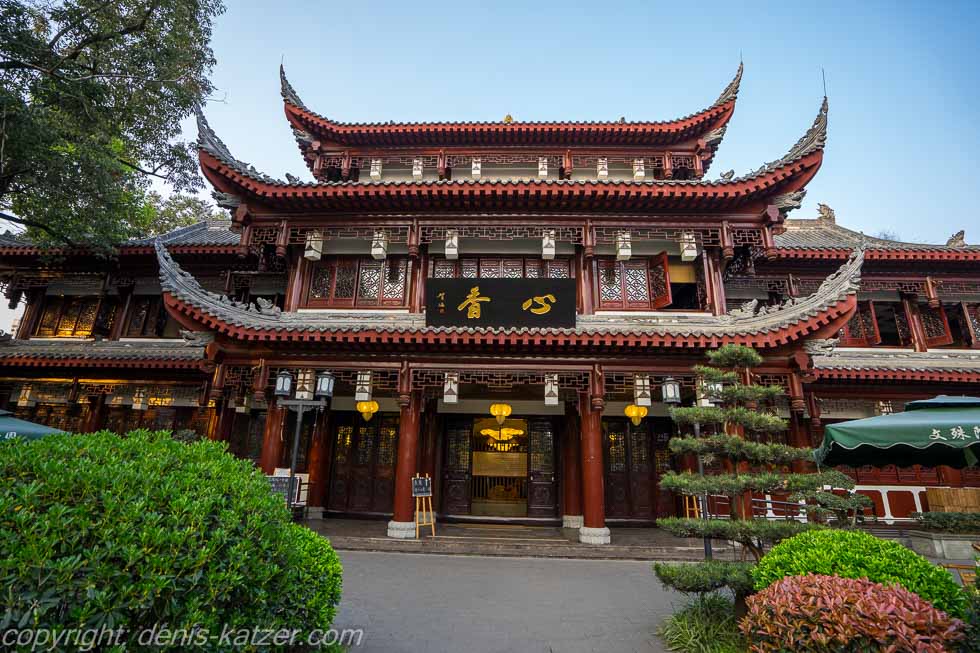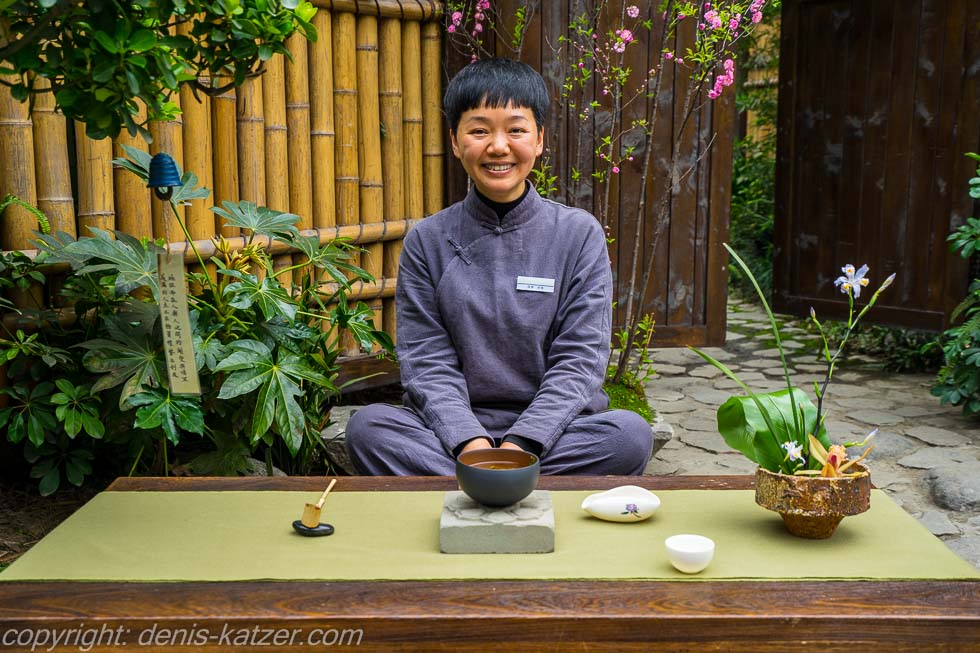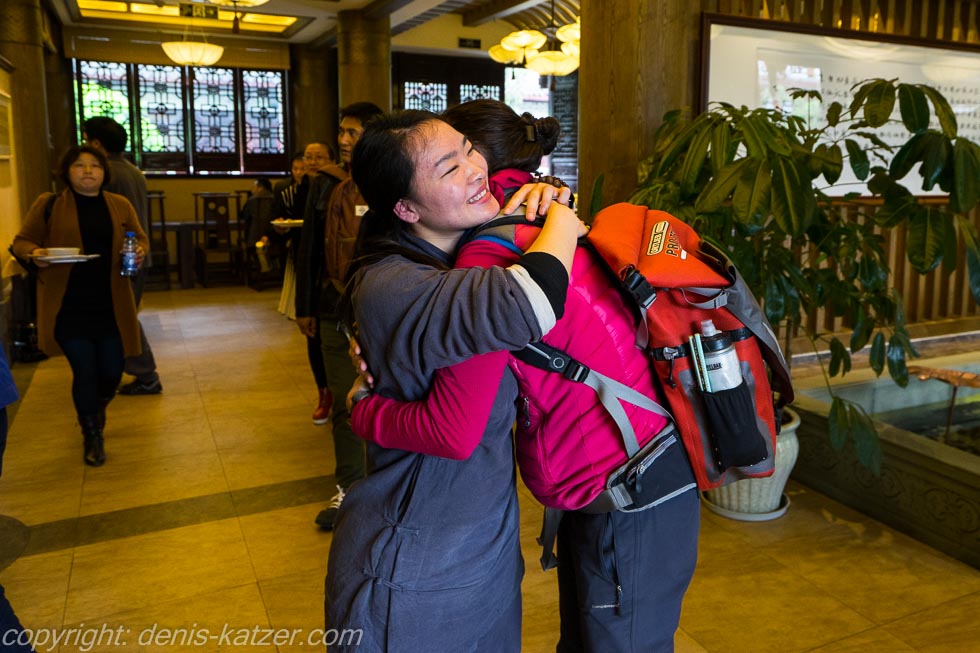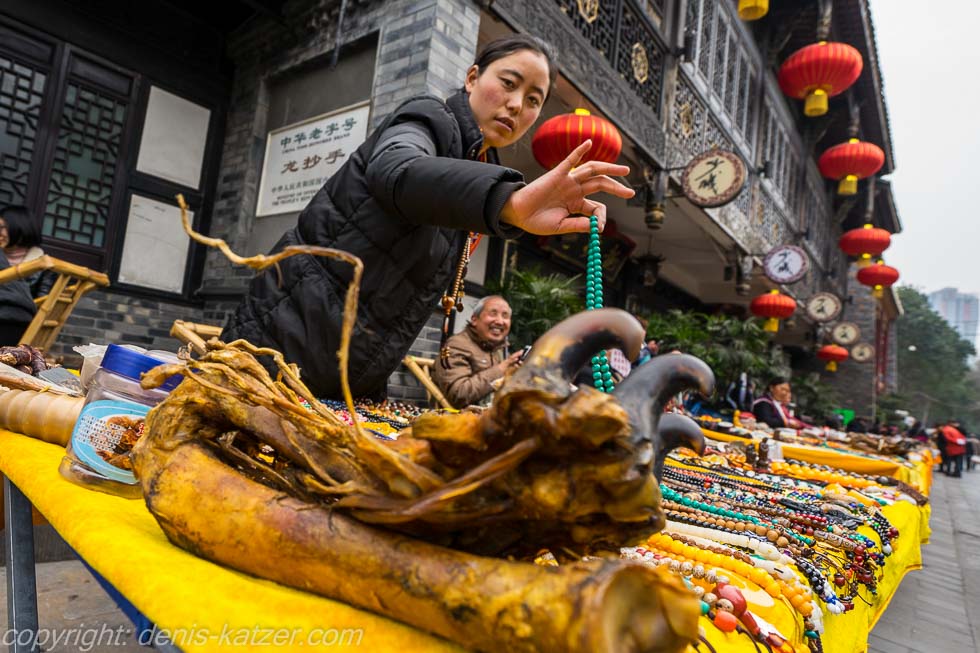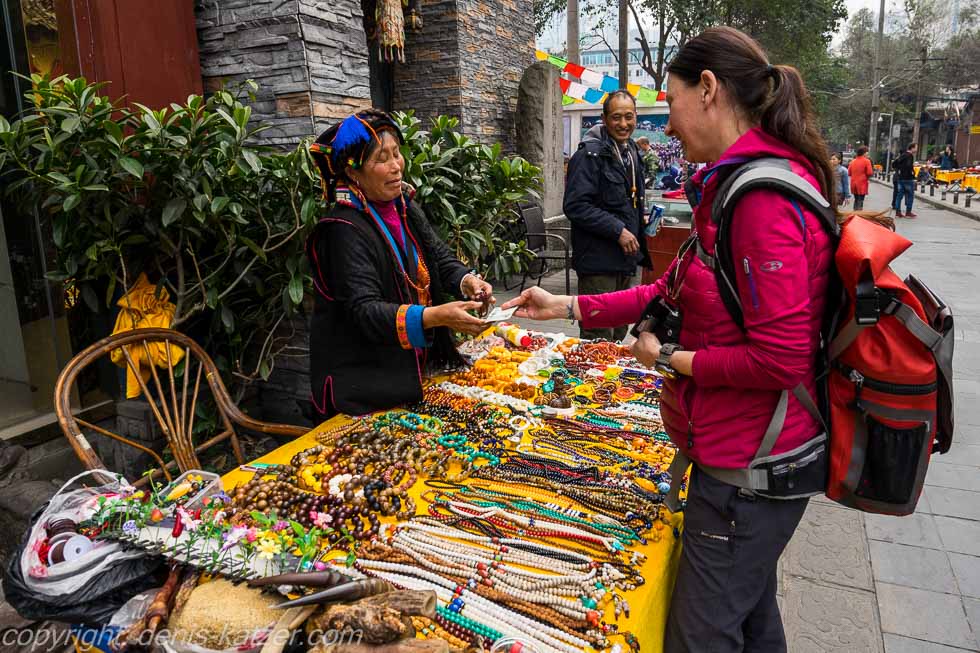
Wenshu Monastery and the temptation to stay there longer
N 30°40'51.0'' E 104°03'23.2''
Date:
10.03.2016 until 17.03.2016
Day: 255 – 263
Country:
China
Province:
Sichuan
Location:
Chengdu
Latitude N:
30°40’51.0”
Longitude E:
104°03’23.2”
Total kilometers:
15,819 km
Maximum height:
500 m
Total altitude meters:
25.392 m
Sunrise:
07:20 am – 07:12 am
Sunset:
7:07 pm – 7:12 pm
Temperature day max:
18°C
Temperature day min:
11°C
(Photos of the diary entry can be found at the end of the text).
After our successful trip to Vietnam, we now have another three-month visa to explore the varied and exciting China. As we still have around 2,000 kilometers to cycle from here to the border and still want to document our experiences in pictures, film and text, we urgently need the time. But before we leave Chengdu, we want to visit the world-famous panda bears and an important museum of China’s oldest dynasty.
Although we ordered our food yesterday in a Muslim restaurant without flavor enhancers as usual, I got sick to my stomach for the umpteenth time. Most people now understand our Chinese when we say: “Qing bu yao fang weijing” (please without glutamate), but sometimes dishes are already pre-cooked or the waiter forgets to tell the chef what we want. No matter how hard we try, this – in my view superfluous – addition of food additives cannot be ruled out.
“The travel guide says that Wenshu Monastery has excellent vegetarian cuisine. When we visit the monastery, we should try the dishes on offer there,” suggests Tanja. “Good idea,” I reply, which is why we set off in the late afternoon to visit the well-preserved monastery from the Tang Dynasty. As we walk along the long, reddish-brown monastery wall, we meet seriously injured and sick people who ask everyone who passes by for a gift. Some of them suffer from severe burns, others have no legs or arms, some are blind or paralyzed by a stroke. Despite their fateful situation, some of them try to earn money in some way, for example by singing or playing an instrument. The mutilations are tragic and make us realize how well off we are and how lucky we have been in our lives so far and hopefully will continue to be. I give a paralyzed woman a few yuan. Then a man asks us if we want to buy a live turtle. He has hung a particularly large specimen from a stick that he carries across his shoulders. “Zhe duoshao qian gui?”, (How much is the turtle?) I ask. “600,- Yuan”, (81,29 €) is his first offer. “But that’s expensive,” I reply. “500 yuan”, (€67.74) he immediately reduces the price to enter into the usual haggling with me. “I would love to buy the poor animal,” says Tanja. “And what do we do with them then? I don’t even know where we should release them. All the rivers in this city are totally contaminated. Besides, that would only encourage the man to catch more turtles to offer to tourists,” I reply. “Of course, it’s a crazy idea to want to save a turtle’s life by buying it,” says Tanja sadly. As we continue on our way, we come across rickshaws with piles of flowers on the back. Others use their stalls on wheels to offer a variety of food. One even has a sugar ear press installed on it. In this way, he can sell fresh sugar cane juice to Chinese tourists. We leave the teahouses, food stalls and stores of the rebuilt old quarter behind us and immerse ourselves in the world of the old monastery. The scent of incense welcomes us. Monks shuffle from one building to another. Believers pray, offer incense, fruit and banknotes. The numerous Chinese roofs of the well-preserved old buildings curve their beak-like ends into a gray, smog-ridden sky. We walk through corridors whose pillars are still made of wood. Red lanterns hang in front of the rooms leading off to the left and right. The view into a prayer room falls on colorful cushions on which the monks are kneeling in prayer. The typical Buddhist prayer chant can be heard everywhere. Although tourists from all over the world visit the monastery, you can sense that this religious site is alive and a retreat for devout Buddhists and monks.
After a while, we reach the monastery’s beautiful teahouse and restaurant. Paintings and works of art are exhibited here with great taste. The skill of serving tea is practiced and explained on low, aesthetic wooden tables. The staff welcome us with friendly, warm smiles. Some speak English and immediately offer us a table. “Are there any dishes without flavor enhancers?” I ask. “We don’t use meat or flavor enhancers here at the monastery,” replies a young woman. For just 35 yuan (€4.81) per person, we can eat our fill of the delicious buffet in a wonderful and extremely peaceful atmosphere. Guests who eat everything on their plates at the buffet even get 5 yuan (€0.68) back. In this way, there is no waste of food in the monastery. We like it so much that we go out for lunch or dinner here for the rest of our days in Chengdu. On the last day of our long stay in this big city, we are invited to take part in calligraphy and special cooking classes. The temptation to stay longer is great, but the desire to explore other parts of China for us is greater…
If you would like to find out more about our adventures, you can find our books under this link.
The live coverage is supported by the companies Gesat GmbH: www.gesat.com and roda computer GmbH http://roda-computer.com/ The satellite telephone Explorer 300 from Gesat and the rugged notebook Pegasus RP9 from Roda are the pillars of the transmission.
